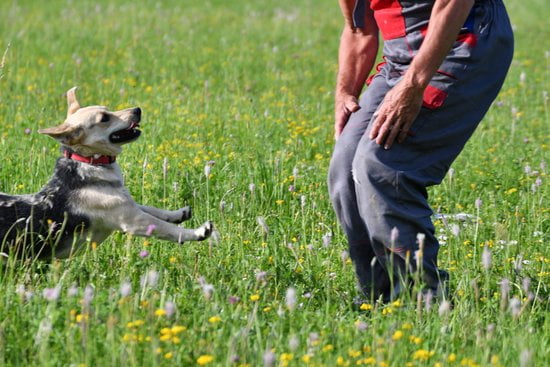Introduction to Carrying a Dog in Train
Carrying a dog in train is an increasingly popular way of safely transporting your canine companion on public transportation such as trains. For many pet owners, the idea of carrying their beloved canine companion while they travel can be both convenient and cost-effective. There are several key benefits to carrying your dog on trains, including preventing your pup from getting lost or being exposed to extreme temperatures, keeping them safe from other passengers and animals in the same space, and allowing you to keep your pup close without having them take up extra space on the train. Additionally, depending on where you are travelling, some train services may even allow for dogs to ride for free or with discounted rates! In order to ensure that both you and your pup have a safe and comfortable experience riding the rails together, there are a few important things you should consider before embarking on your journey.
First of all, you will need to make sure that your pet is both physically and mentally prepared for their journey; this includes making sure that they have had plenty of exercise before the ride as well as providing them with some form of assurance before boarding so that they do not become anxious or distressed during the journey. Additionally, it is important to ensure that your pup is restrained properly at all times when riding the train. If possible, look into investing in a sturdy pet carrier so that they have plenty of room to move around while still being secured safely and comfortably. Lastly, remember that each country or region may have different regulations surrounding carrying a dog in train so be sure to do some research beforehand!
Important Safety Considerations
Safety is an important consideration when carrying a dog in the train. First, it’s important to make sure that your dog is fit enough for travel and does not have any issues with motion sickness. Speak with your vet and get their advice before deciding if it’s safe for your pup to undertake the journey.
Secondly, be aware of the relevant regulations for travelling on the railway applicable to you, your pet and where you’re travelling. Make sure that you have all necessary documentation, such as pet passports or vaccination certificates, that may be required before boarding a train.
You should also take precautionary measures in advance that will increase the comfort and security of both yourself and your pet while you’re onboard. This includes researching ahead of time which trains are pet-friendly, considering using a special carrier bag designed specifically for carrying dogs safely on public transport, and practising walking your pup up an escalator by using a belt leash while they wear a harness so they don’t slip through any grids or gaps in the carriages.
Materials Needed
Carrying your dog in a train is certainly possible, however it is important to have the right materials first. Generally, pet owners need the following items:
First and foremost, a soft-sided carrier bag or crate. This should be big enough for the dog to stand, turn around, and lie down comfortably. The carrier should also be airline-approved if needed.
Next, choose a comfortable harness and leash for your dog to wear during transport. This should fit snugly on your pooch and enable you to easily control them in public.
You may also need additional items such as an absorbent blanket or puppy pads for long trips and other accessories like toys, treats and water to keep your pup occupied during their travels. Many trains provide food bowls on request, but it’s always best to be prepared with extras just in case! Lastly, make sure that you always carry any papers required by law (such as proof of vaccination) when traveling with your pup anywhere within Europe.
Step-By-Step Guide
Step 1: Have all the necessary items – Before going to the train station, make sure you have the right supplies, such as a pet carrier or a leash with a comfortable handle.
Step 2: Board the Train – As soon as you arrive at the station and find your seat, it is best to leash your dog before boarding the train. This helps ensure that your pet doesn’t wander too far away during transit.
Step 3: Secure Your Pet – Once on board and seated, secure your dog in its pet carrier or use safety straps/harnesses if not using a carrier. It is important to provide ample space for your pet to move around so they don’t feel uncomfortable during their journey.
Step 4: Provide Food & Water – Bring along plenty of food and water for your pet when taking them on a train ride, as well as any other essential products that ensure their comfort throughout the trip (e.g., treats, blankets).
Step 5: Interact With Your Pet – During travel time, interact with your pet and show affection. Talking softly will help keep them calm and prevent agitation.
Step 6: Use Public Restroom Breaks Wisely – When given breaks to go last trips lasting more than 2-3 hours, use this opportunity to give your pet a restroom break and some fresh air outside of the train.
Step 7: Cleanup & Litter Properly – When pets use washrooms on the train (or mess up in general) make sure to properly clean it up immediately after so no disruption is caused and quality assurance is met onboard accepted policies are met.
Step 8: Arrive at Your Destination – Upon completing their journey, don’t forget to take pictures of you and your pup in front of familiar landmarks or anything else memorable you encountered during transit!
Additional Tips to Make Carrying Your Dog Easier
1. Make sure you have a secure carrier that is large enough and has plenty of ventilation for your dog.
2. Bring along plenty of treats to reward good behavior during the ride.
3. Pack all necessary items, such as food and water bowl, leash, blanket, poop bags, etc.
4. Make comfort a priority by providing a soft cushion for the bottom of the carrier and a blanket to lay over the sides if needed.
5. Position the pet carrier near a seat where it won’t impede upon passenger foot space and also won’t be easily bumped by passing passengers or rolling suitcases.
6. Train your dog prior to travel by getting him used to being in his carrier in anticipation of extended stays in confined spaces while on board the train |or while waiting at stations).
7. If having trouble carrying your pet by yourself, ask someone with enough strength to assist you or take advantage of any special equipment available at select locations intended to help those who need assistance carrying their pets on board trains or up stairs at airports (if allowed).
8. Last but not least: communicate clearly with staff members about your traveling arrangement so that everyone is aware and on the same page about how many pets are being brought inside and where they will be situated throughout the entire trip! Plan accordingly and arrive early!
FAQs
Q: Is carrying my dog in train allowed?
A: The regulations for carrying your dog in train vary from state to state, so it’s best to check with your local transit authority before attempting to bring a pet on board. Most will require proof of vaccination and certification that the animal is healthy enough to be transported.
Q: Are there any additional fees or rules I need to follow?
A: Depending on the transit authority, there may be an additional fee for bringing a pet onboard. Many will also restrict the size and type of animal you can carry, as well as require that it either be leashed or carried in a secure carrier.
Q: What should I do if my dog starts feeling anxious while traveling?
A: If your pet begins exhibiting signs of distress while on board, your best option is to remove them from the train at the next stop and let them out to get some fresh air. Make sure your pet has access to plenty of water and food, and provide reassurance when needed.
Testimonials
Carol L. had this to say about carrying her dog on the train: “Once I realized how easy it was to carry my pup on the train, we both looked forward to our trips! No more waiting in long lines at the airport, and no worries about a missed connection or airline restrictions. It was incredibly convenient. Plus, my pup loved looking out the window of the train as we traveled.”
Adam H. added, “Let me tell you what worked for me: I used a rolling pet carrier with wheels on one end that fit perfectly between my seat and the wall of the train car so I didn’t have to hold it the entire time. Not only did this make things much easier for me, but my pup also enjoyed lying down without having to balance in someone’s lap.”
Jackie G. echoed these sentiments by saying, “I use a backpack designed specifically for carrying small pets – it makes traveling with my dog so much easier! The shoulder straps help relieve some of the weight and distribute it evenly across my back and shoulders. Best of all, I can move around freely with both hands while keeping my pup close and secure.”
Conclusion
So there you have it, everything you need to know about travelling with your pet dog by train. Safety should always be a priority when it comes to transport, and this is especially true for carrying your pet on a train. Make sure that you adhear to the safety requirements of both your public transportation service provider as well as any rules set out by the carrier or collar manufacturer. Prepare your dog in advance for the journey and remember to keep them secure at all times while travelling. Finally, keeping these things in mind will ensure that you and your pet can enjoy a safe and comfortable journey together – one that is stress-free and filled with fun!

Welcome to the blog! I am a professional dog trainer and have been working with dogs for many years. In this blog, I will be discussing various topics related to dog training, including tips, tricks, and advice. I hope you find this information helpful and informative. Thanks for reading!





